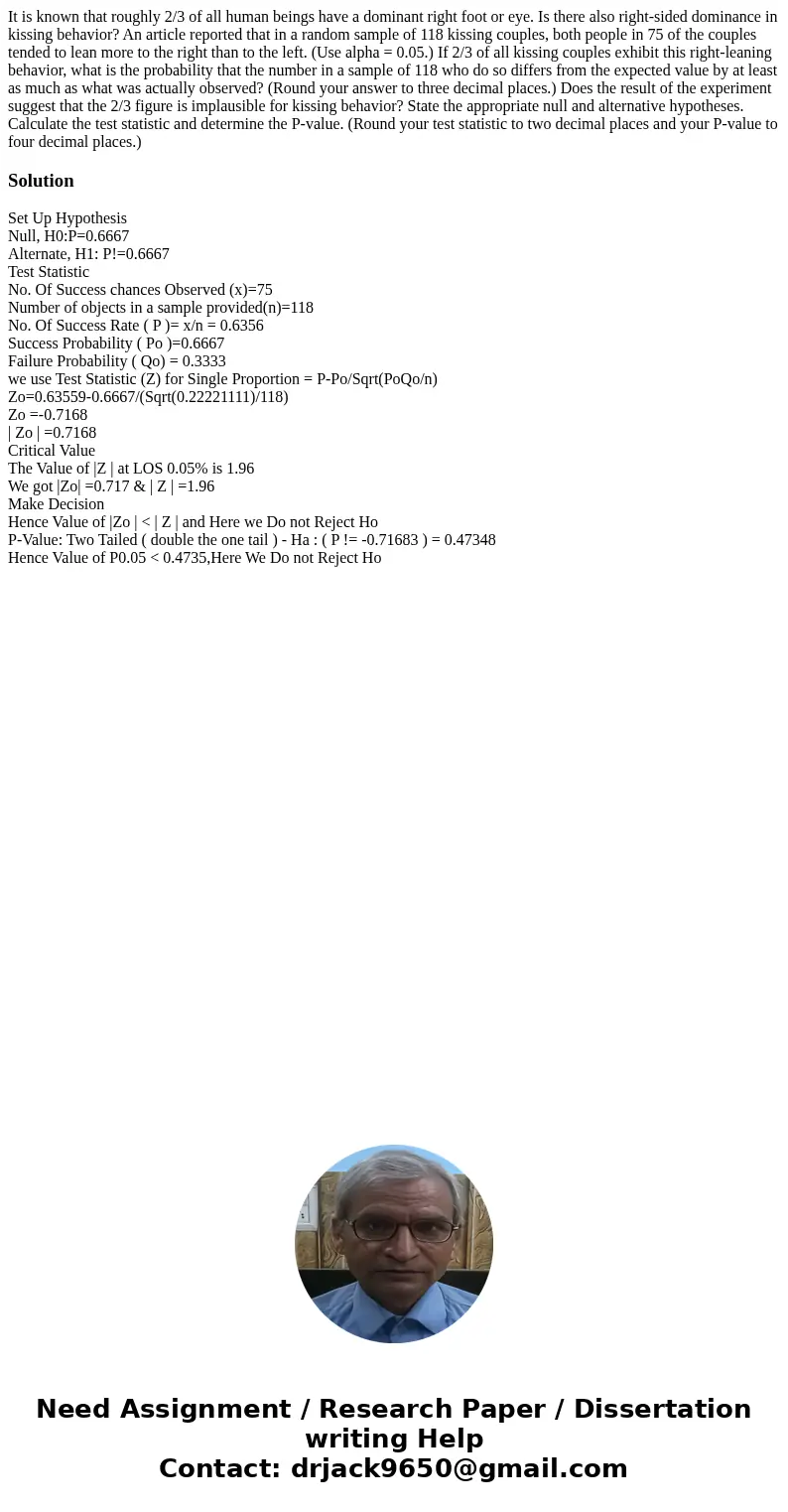It is known that roughly 23 of all human beings have a domin
It is known that roughly 2/3 of all human beings have a dominant right foot or eye. Is there also right-sided dominance in kissing behavior? An article reported that in a random sample of 118 kissing couples, both people in 75 of the couples tended to lean more to the right than to the left. (Use alpha = 0.05.) If 2/3 of all kissing couples exhibit this right-leaning behavior, what is the probability that the number in a sample of 118 who do so differs from the expected value by at least as much as what was actually observed? (Round your answer to three decimal places.) Does the result of the experiment suggest that the 2/3 figure is implausible for kissing behavior? State the appropriate null and alternative hypotheses. Calculate the test statistic and determine the P-value. (Round your test statistic to two decimal places and your P-value to four decimal places.)
Solution
Set Up Hypothesis
Null, H0:P=0.6667
Alternate, H1: P!=0.6667
Test Statistic
No. Of Success chances Observed (x)=75
Number of objects in a sample provided(n)=118
No. Of Success Rate ( P )= x/n = 0.6356
Success Probability ( Po )=0.6667
Failure Probability ( Qo) = 0.3333
we use Test Statistic (Z) for Single Proportion = P-Po/Sqrt(PoQo/n)
Zo=0.63559-0.6667/(Sqrt(0.22221111)/118)
Zo =-0.7168
| Zo | =0.7168
Critical Value
The Value of |Z | at LOS 0.05% is 1.96
We got |Zo| =0.717 & | Z | =1.96
Make Decision
Hence Value of |Zo | < | Z | and Here we Do not Reject Ho
P-Value: Two Tailed ( double the one tail ) - Ha : ( P != -0.71683 ) = 0.47348
Hence Value of P0.05 < 0.4735,Here We Do not Reject Ho

 Homework Sourse
Homework Sourse